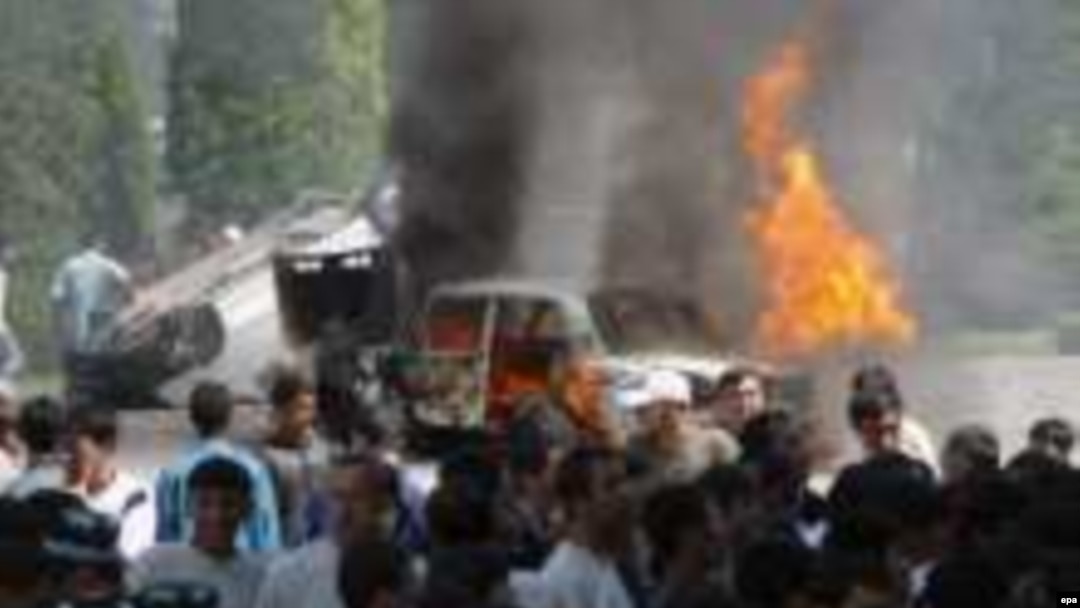NEW YORK, March 7, 2006 (RFE/RL) -- The Uzbek government continues to reject calls for an international investigation into the event by many human rights organizations and European countries.
Galima Bukharbaeva, a reporter and an eyewitness to the massacre, is currently a student at Columbia's Graduate School of Journalism. She tells RFE/RL that sometimes people compare the massacre in Andijon with the events at the Tiananmen Square in Beijing, China, in May 1989. But there are important distinctions, she says.
"Many say that in China [Tiananmen Square] the troops didn't block exits, they did not attempt to trap people and then shoot them," Bukharbaeva says. "They were shooting into the crowd but didn't block the exits, did not methodically kill the participants. They also didn't kill the wounded. [In Andijon] soldiers were roaming streets through the night asking residents if there were any wounded. If someone responded -- thinking that help was on the way -- they simply killed the person."
Bukharbaeva says a criminal investigation was launched against her in Uzbekistan after she left for the United States in August. Initially, she says, the authorities were harassing her mother but later left her alone. The investigation into her allegedly "subversive activities" has not been brought to court. But the relative calm in Andijon and apparent return to normalcy, she says, is merely an illusion.
"The town continues to be in a state of deep shock," she adds. "People are afraid. People don't talk about what happened. When they gather together, they don't trust each other; maybe they only talk about this inside the close family, but I am not sure. This is a town gripped by fear."
Human Rights Activities Hampered
Acacia Shields, a senior researcher on Central Asia at Human Rights Watch, says another casualty of the Andijon massacre is the human-rights movement in Uzbekistan.
"The human rights defenders in Uzbekistan comprised a very fragile community before the Andijon events. What happened as a result of the government campaign [of intimidation] after the massacre was that this community was devastated," Shields says. "More than a dozen human rights defenders were forced to flee. The government lashed out with intense fury at this group of people."
"The cost to Uzbek society of losing these people, a group of people that were the keepers of the intellectual and political history of the country, who were the experts on the political and civil rights situation in the country, and who maybe, most importantly, were among the most committed to improving the country and to making it a better place, the loss of those people to the future of Uzbekistan is just incalculable," Shields says.
Radicalized Public
Peter Sinnott is an adjunct professor at Columbia's School of International and Public Affairs and the conference' organizer. He says the kind of debate in which Andijon's demonstrators were engaging is uncommon in Central Asia, where government's seek tight control over public discourse.
Sinnott tells RFE/RL that the injustice and suppression perpetrated by the Uzbek government had created conditions that radicalized otherwise moderate Islamist movements.
"There's a struggle throughout Central Asia for two things: There's a struggle for authority, and there's a struggle for justice," Sinnott says. "And these states have very little authority with the people no matter how well they can put together press packages and fill the newspapers with their words. The reality is that very few of these people view their citizenship as a very critical component of their identity."
Meanwhile, there were at least two Uzbek diplomats in the audience at the Columbia conference who declined to identify themselves to RFE/RL or to comment on the debate. They were diligently taking notes, recording the discussion, and photographing the panelists.
Aftermath Of Andijon
A dedicated webpage bringing together all of RFE/RL's coverage of the events in Andijon, Uzbekistan, in May 2005 and their continuing repercussions.


